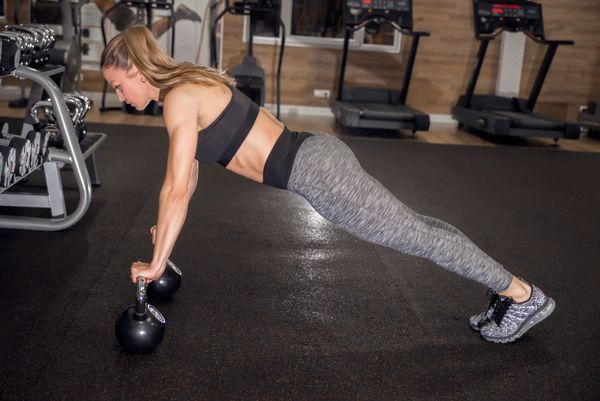Everybody knows this simple fact: Exercise is good for you. That knowledge keeps you going to the gym, briskly walking the neighborhood or cycling in the park when you could be on the sofa with a bowl of popcorn and a favorite movie.
Physical activity has positive effects on good health throughout our lives. Yet, what we do to stay fit can hurt us. We exercise with the best intentions but can end up sidelined by muscle and bone pains, strains, tears or breaks. Although injuries to competitive athletes get the most public attention, those of us who are just trying to stay in shape (or get back into it!) also can damage ourselves through our fitness efforts.
Studies show that women who are the slowest runners, the least aerobically fit or the least active in general are significantly more likely to suffer stress fractures than are more active women. If you're a regular exerciser, you can endure activity-related injuries as well. Jogging, walking and aerobics are among the activities that produce the greatest number of injuries among 25- to 44-year-olds. Having a greater number of exercise sessions each week improves your aerobic fitness but also increases your injury risk.
Whatever your skill level, the way to avoid harm isn't to stop doing physical activity. Instead, correcting exercise mistakes and reducing your risks can help keep you safe, active and healthy.
Love your body
Any plan to injury-proof yourself during physical activity has to begin with understanding, and loving, your body. That means using exercise as a way to build and support your body—not punish it.
Consider your current physical condition and adjust your effort accordingly. "Older women and heavier women may have already developed some degenerative changes in their weight-bearing joints, making them more susceptible to injuries," says Jane E. Corboy, MD, a family and community medicine specialist with expertise in women's health and sports injuries at Baylor College of Medicine, Houston. Most people over 40 have some cartilage deterioration in their knees, Dr. Corboy notes. That can cause the cartilage—joint-covering tissue that provides shock absorption and helps bones move—to tear more easily.
Set realistic goals for your physical activities to achieve a balance between promoting good health and limiting injuries.
Chrys Kub, physical therapist, yoga therapist and founder of the YogaFit Yoga Therapy Program in Charlotte, NC, cites "doing too much, too fast, without building up the strength and endurance" you need as being one of the biggest mistakes she sees many women make. "When you are starting a new exercise program that is unfamiliar to you," she says, "find a trainer or instructor to work with you. That will ensure you understand proper form and progression of the exercise."
Avoid overuse
Too many of us perform one exercise movement over and over again. This can injure the muscles, joints and bones involved in that activity and lead to tendonitis, shin splints, rotator cuff injuries and pain.
"We see repetitive overuse injuries in someone who's running or doing step aerobics most days of the week and not engaging in any other activity," says Cheryl Sparks, PT, DPT, assistant professor of physical therapy and health science at Bradley University in Peoria, IL. "It's important to vary your routine."
Click here for fun ways to vary your exercise routine.
Pressure to keep up in an exercise class can also cause you harm. You might push yourself beyond your physical capabilities or injure yourself because you haven't learned correct form. "Practicing yoga in a class that is too large or too intense for that person's level, or with an inexperienced teacher, can lead to injuries," Kub says. The same goes for spinning, aerobics, lifting weights, Pilates and other group endeavors.
In addition, overuse injuries may stem from underlying biomechanical problems (such as imbalances caused by flat feet or weak muscles) or from using incorrect equipment or poor training techniques, says Dr. Corboy. Put ice on the injured area for temporary relief, but it's also important to identify what caused the problem and correct it for the future. You may want to consult with a sports medicine doctor or physical therapist.
Stretch yourself
A good way to fend off injury is to stretch regularly, to develop flexibility. Stretching—which may seem like a time-waster when you're rushing to get home or to work—is a must for protecting against activity-related problems.
"Often, we're so consumed with focusing on cardiovascular exercise or walking that we forget about the importance of flexibility," says Dr. Sparks. Developing flexibility, she says, is "as important or more so than exercise itself" because having adequate flexible muscles can help to reduce one's risk of injury.
Although, in general, women are more flexible than men, we lose some of that flexibility as we age. Add in an exercise routine focused on one type of movement, little or no stretching and unhealthful shoe choices (prolonged wearing of high heels shortens calf muscles; flip-flops promote flat feet) and you put yourself at risk for leg pain, arthritic problems and more.
"I can't emphasize enough the importance of stretching following your exercise routine," Dr. Sparks says. Most doctors now suggest stretching at the end of your activity, when your muscles are warm.
Dr. Sparks recommends a five-minute slow walk or jog to warm up before each exercise session. The warm-up will raise your heart rate and core body temperature, as well as pump blood into the large muscle groups, getting them ready to work.
The cool-down phase of your activity is especially important in protecting you from exercise injury. Spend five minutes slowing your movements down to a gentle walk. This lowers your heart rate. Then take 10 minutes for what Dr. Sparks calls a "post-cool-down stretch." It's this step that many people skip but which can increase flexibility and help you injury-proof yourself.
If you have concerns about how to stretch safely, Dr. Sparks advises consulting with a physical therapist to develop an individualized stretching program.
Other tips for avoiding exercise injuries:
- Give your body the right exercise gear. Wear sturdy athletic shoes when you walk. Do aerobics or go jogging in shoes made for those activities, and get them professionally fitted for your feet if possible. You'll find advice on choosing the right fitness shoe here.
- Wear a helmet and other protective gear for bike riding, in-line skating, skiing and other exercises where falls or collisions are more likely to occur.
- If you cycle, have your bike fitted and aligned for proper rider position. Ask a bike specialist or trainer to evaluate your pedaling technique to make sure it's not stressing your knees or legs.
- Fitness ›
- The Only Upper Body Exercises You'll Ever Need...Without Stepping Foot in a Gym! ›
- How to Get a Strong, Sexy Back ›
- How to Improve Your Balance and Reduce Your Risk of Falling ›







